Ubiquiti recently sent us the UniFi Cloud Gateway Fiber, a compact 10G security gateway built to handle advanced routing and high IDS/IPS throughput while supporting the full UniFi application suite. Unlike the UniFi Dream Router 7 we looked at previously, which targeted users needing an all-in-one router with integrated Wi-Fi, the Cloud Gateway Fiber is designed for environments that demand high-throughput networking and multi-gig flexibility. With dual 10G SFP+ ports, a 10GBASE-T port, and multiple 2.5 GbE ports, the gateway positions itself as a cost-effective way to bring 10G performance into small- to mid-sized UniFi deployments.
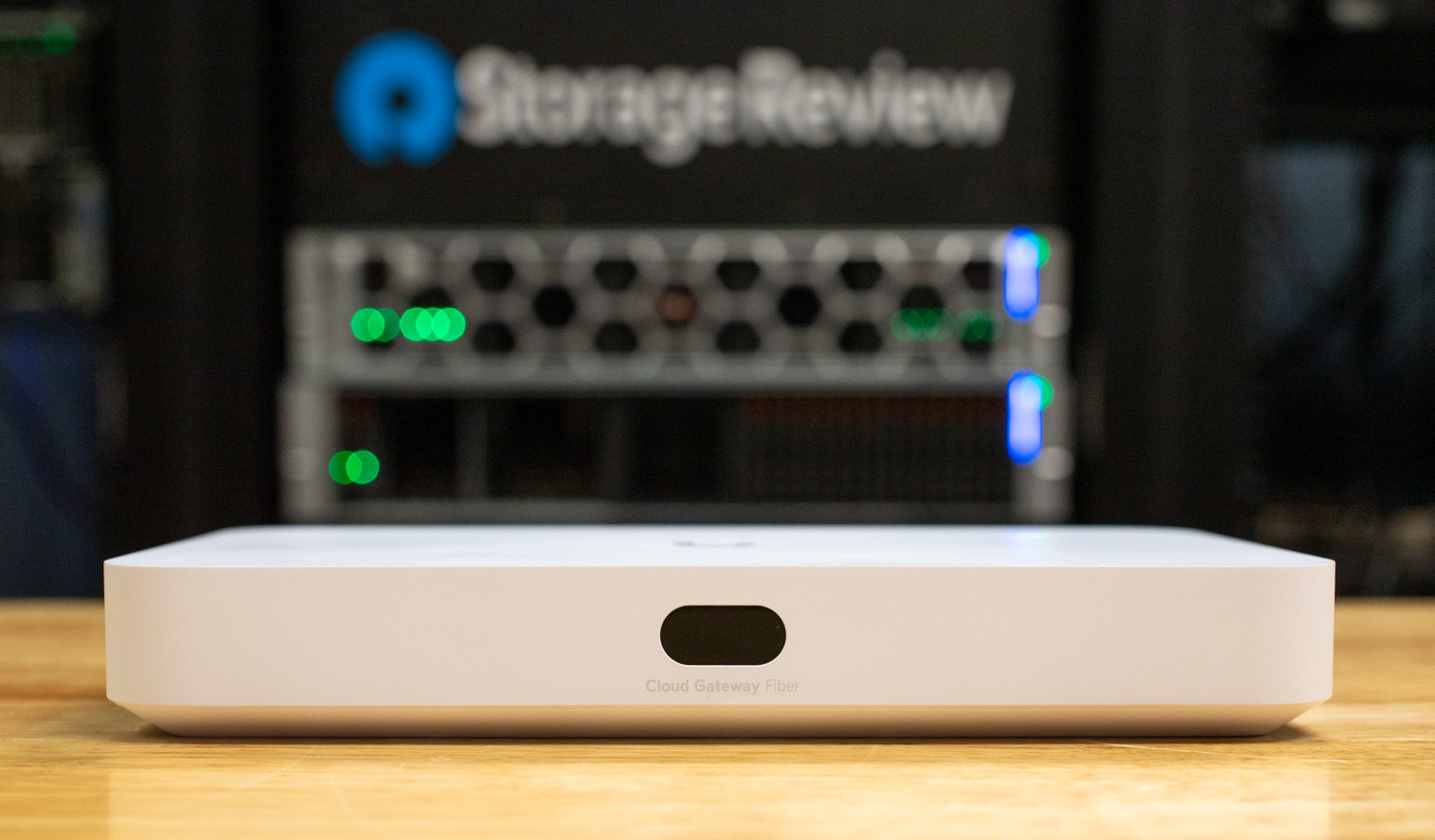
Priced at $279.00 on the Ubiquiti Store (affiliate link), the Cloud Gateway Fiber brings 10G routing performance to an extremely affordable price point.
Specifications UniFi Cloud Gateway Fiber
The table below outlines the complete hardware and software specifications of the UniFi Cloud Gateway Fiber.
| Specification | UniFi Cloud Gateway Fiber |
|---|---|
| Dimensions | 212.8 x 127.6 x 30 mm (8.3 x 5 x 1.2 inches) |
| UniFi Application Suite | Network, Protect, Access, Talk, Connect |
| Managed UniFi Devices | 50+ |
| Managed Cameras | (15) HD, (8) 2K, (5) 4K |
| Simultaneous Users Connected | 500+ |
| Default WAN Ports | (1) 10G SFP+, (1) 10 GbE RJ45 |
| LAN Ports | (1) 10G SFP+, (4) 2.5 GbE RJ45 |
| IDS/IPS Throughput | 5 Gbps |
| Form Factor | Compact desktop |
| Security Features | Stateful Firewall, Layer 7 Firewall, DPI & Traffic Identification, Zone-Based Firewall, Content Filtering, IPS/IDS, Ad Blocking |
| IDS/IPS Signatures | 55,000+ with CyberSecure |
| Traffic Segmentation | VLAN/Subnet-based |
| VPN & SD-WAN | License-Free SD-WAN, Site Magic, IPsec, OpenVPN, WireGuard, Teleport Zero-Configuration VPN, L2TP |
| Networking | Multi-WAN Load Balancing, OSPF, Advanced QoS, mDNS, Advanced NAT, Integrated RADIUS Server, RadSec, LTE Backup, Internet Quality Monitoring |
| MAC Address Table Size | 4,000 |
| NVR Storage | Selectable NVMe SSD up to 2 TB |
| PoE Budget | 30W |
| Power Supply | 54V DC/1.1A (adapter included) |
| Processor | Quad-core ARM Cortex-A73 at 2.2 GHz |
| System Memory | 3 GB |
| Weight | Without SSD: 675 g (1.5 lb); with SSD: 734 g (1.6 lb) |
| Enclosure Material | Polycarbonate |
| LCM Display | 0.96″ status display |
| Management | Ethernet, Bluetooth |
| LED Indicators | Ethernet, SFP+ |
| Button | (1) Factory reset |
| ESD/EMP Protection | Air: ±8kV, Contact: ±4kV |
| Ambient Operating Temperature | 0 to 40° C (32 to 104° F) |
| Ambient Operating Humidity | 5 to 95% noncondensing |
| Certifications | CE, FCC, IC |
| NDAA Compliant | Yes |
Performance per Dollar with Cloud Gateway Fiber
Starting from a throughput and cost perspective, the Cloud Gateway Fiber offers an impressive value compared to the UniFi Dream Machine SE. As mentioned, starting at $279 without storage, the UCG-Fiber delivers up to 5 Gbps of IDS/IPS-secured routing bandwidth, making it nearly 50% faster than the UDM-SE’s 3.5 Gbps performance, despite costing almost half the price of the $499 UDM-SE. While the UDM-SE brings more in terms of 8 vs. 1 total PoE ports, expanded storage options, and higher device capacity, the Cloud Gateway Fiber positions itself as a strong option for smaller environments. It prioritizes highly secure throughput at a lower entry cost. This makes it particularly appealing for networks where throughput efficiency per dollar is the main deciding factor.
| Specification | UCG-Fiber | UCG-Max | UDM-SE | UDR7 |
|---|---|---|---|---|
| Price (MSRP) | $279 | $279 | $499 | $279 |
| 10G Ports (RJ45 / SFP+) | 1 × 10GBASE-T / 2 × 10G SFP+ | 0 / 0 | 0 / 2 × 10G SFP+ | 0 / 1 × 10G SFP+ |
| Default WAN | (1) 10G SFP+ and (1) 10G RJ45 (selectable) | (1) 2.5 GbE RJ45 | (1) 10G SFP+ and (1) 2.5 GbE RJ45 | (1) 10G SFP+ and (1) 2.5 GbE RJ45 |
| PoE Out | 1 × PoE+ (30 W) | — | 8 PoE ports (6 PoE, 2 PoE+), 180 W budget | 1 × PoE (15.4 W) |
| CPU / RAM | Quad-core ARM Cortex-A73 2.2 GHz / 3 GB | Quad-core ARM Cortex-A53 1.5 GHz / 3 GB | Quad-core ARM Cortex-A57 1.7 GHz / 4 GB | Quad-core ARM Cortex-A53 1.5 GHz / 3 GB |
| IDS/IPS Throughput | 5 Gbps | 2.3 Gbps | 3.5 Gbps | 2.3 Gbps |
| Storage Options | NVMe SSD (M.2) up to 2 TB | NVMe SSD (M.2) up to 2 TB | 3.5″ HDD bay + 128 GB SSD (integrated) + 16 GB eMMC | 64 GB microSD (included) + microSD expansion |
| Device / Camera Guidance | 50+ devices; cameras: 15 HD / 8 2K / 5 4K; 500+ users | 30+ devices; cameras: 15 HD / 8 2K / 5 4K; 300+ users | 100+ devices; cameras: 24 HD / 14 2K / 8 4K; 1,000+ users | 30+ devices; cameras: 5 HD / 2 2K / 1 4K; 300+ users |
Moreover, when compared to a similar form factor device like the Cloud Gateway Max, the Fiber model offers greater value with networking flexibility. The UCG-Fiber includes a 10GBASE-T WAN/LAN port, dual 10G SFP+ interfaces, and multiple 2.5 GbE ports, while the Max is limited to 2.5 GbE. For users planning to adopt multi-gig switching/routing or looking to future-proof with 10 GbE uplinks, fiber provides a clear advantage at only a modest increase in cost, strengthening its position as the better long-term investment.
Build and Design UniFi Cloud Gateway Fiber
Starting with its overall size, the UniFi Cloud Gateway Fiber comes in at a compact footprint of 8.3 x 5 x 1.1 in (212.8 x 127.6 x 30 mm), making it a true desktop-class form factor. The unit features a solid white polycarbonate housing with a sturdy feel, weighing in at around 1.5 lb.
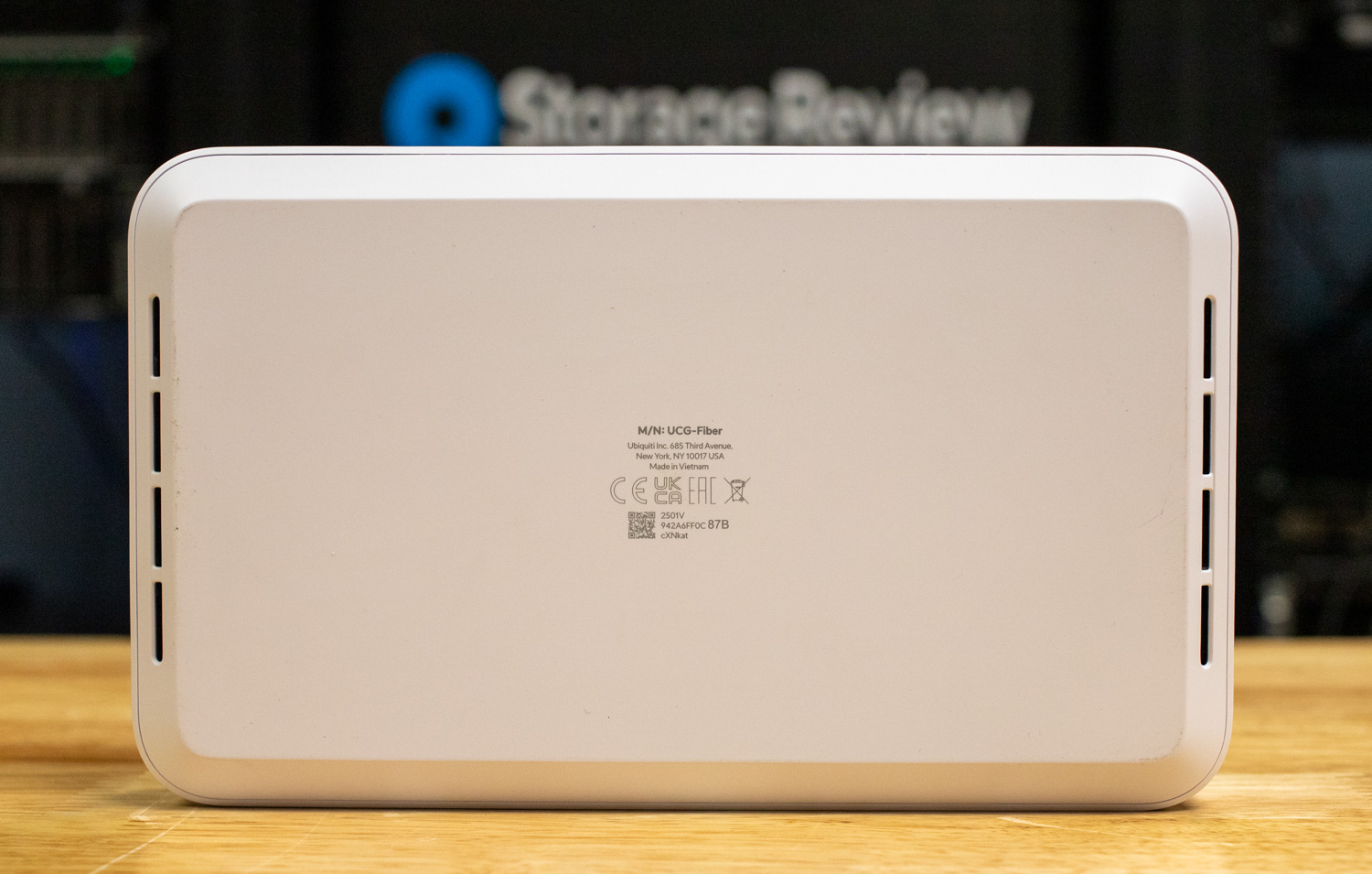
On the front, a 0.96″ LCM status display provides at-a-glance system information such as total throughput in and out, connected devices, and client counts, giving quick visibility without needing to log into the controller.
Moving to the rear of the device, starting from the left, there are four 2.5 GbE ports, with port 4 supporting PoE+ and delivering up to 30W of power. The fifth RJ45 port supports 10G/2.5G/1G and can be configured as a WAN uplink. On the SFP+ side, the unit includes two 10G/1G ports, with the furthest-right port also configurable as a WAN uplink. To the far right is a DC power input for the included external 54V DC/1.1A (100–240V AC) power supply, along with a factory reset button to restore the gateway to default settings.
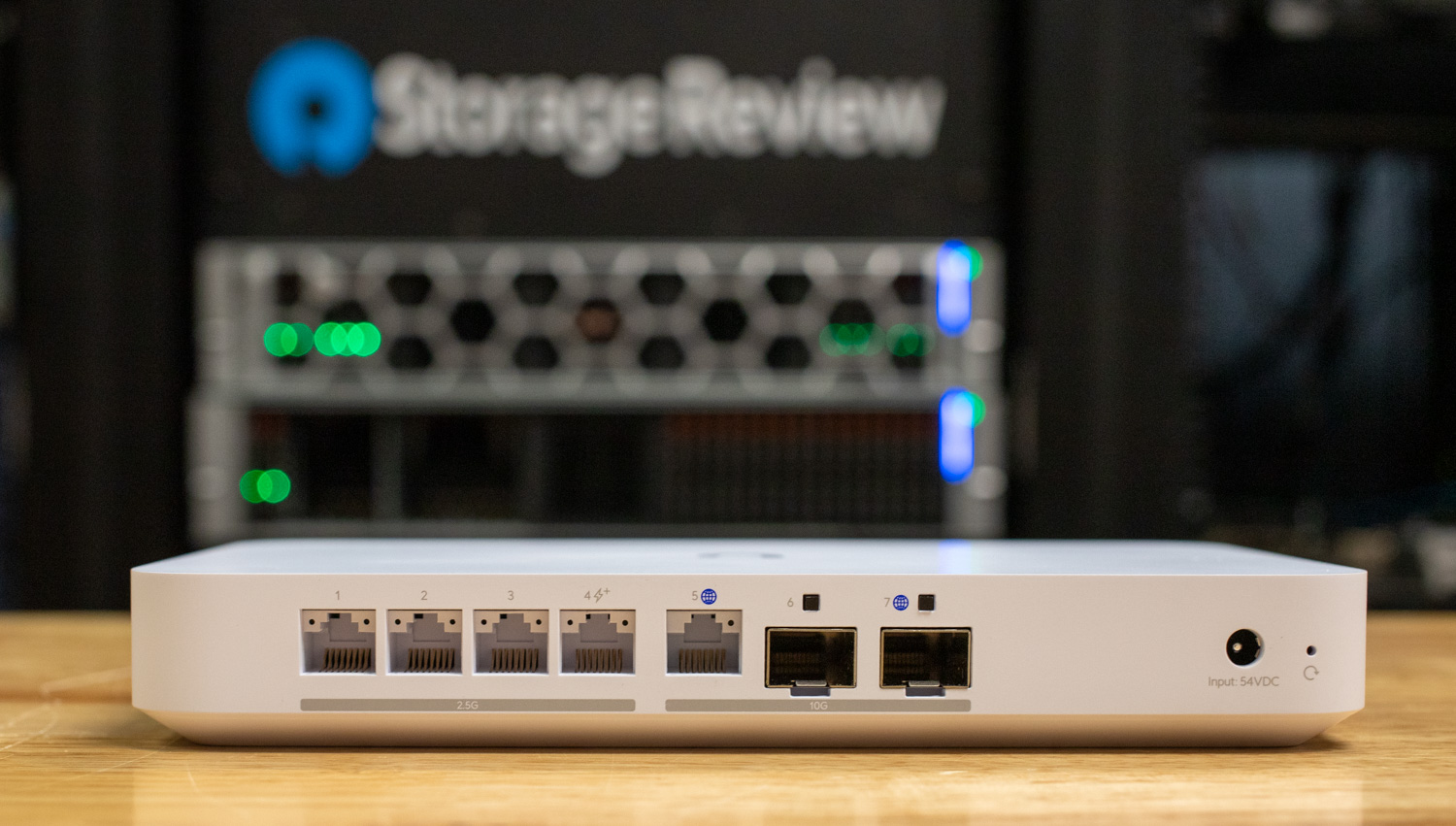
On the left-hand side of the chassis (viewed from the front) is an integrated M.2 slot, where an optional SSD sled can be installed to add an NVMe drive of up to 2 TB. This storage option enables UniFi Protect support, with capacity for up to 15 HD cameras, 8 2K cameras, or 5 4K cameras.
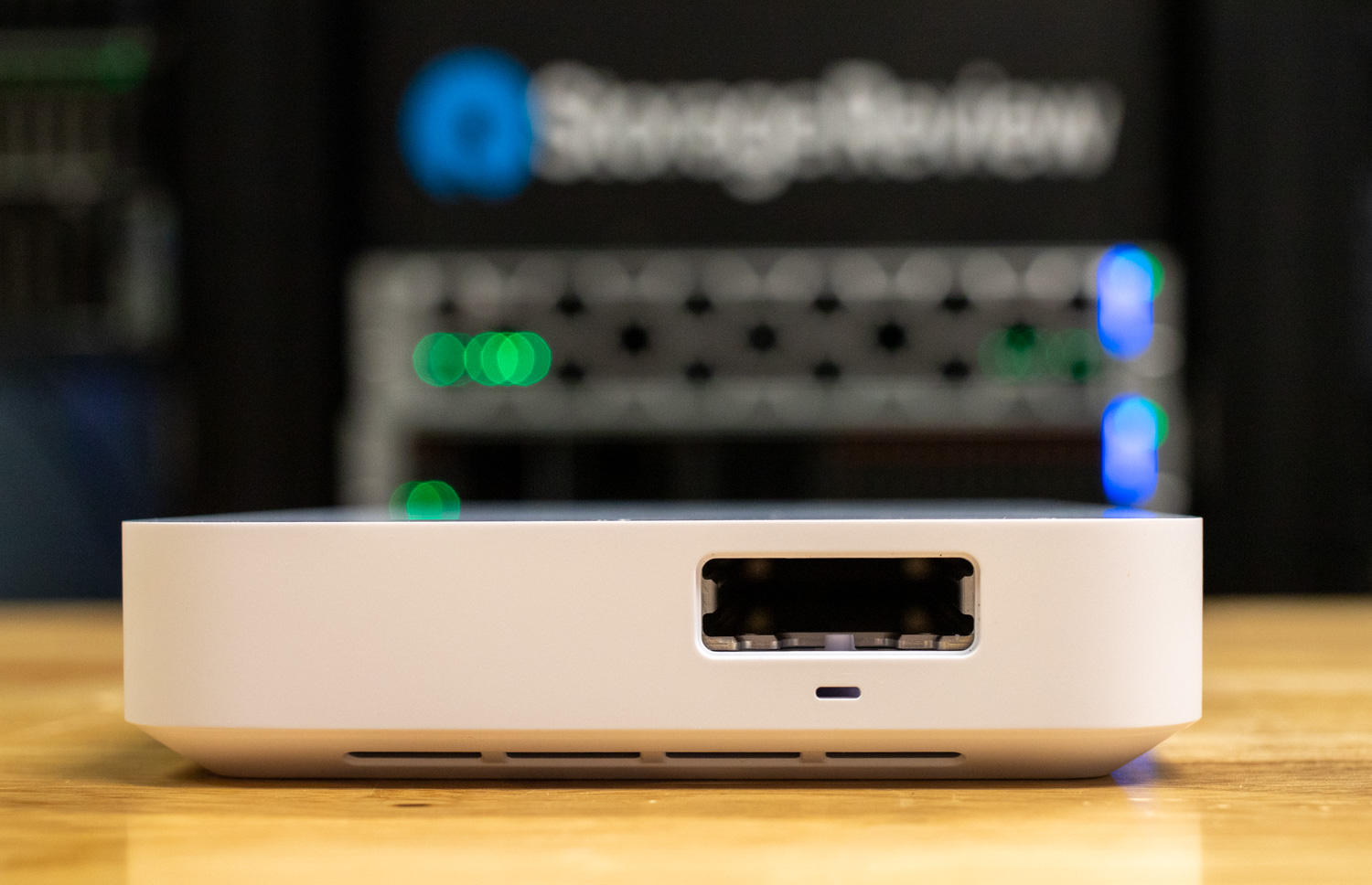
Internally, the UCG-Fiber is powered by a quad-core ARM Cortex-A73 processor clocked at 2.2 GHz paired with 3 GB of system memory. This hardware foundation allows the device to handle 50+ adopted UniFi devices and over 500 simultaneous user connections, making it well-suited for small- to mid-size deployments.
UniFi Network Overview
In our test environment, the Cloud Gateway Fiber is running UniFi OS 4.3.9 paired with Network 9.3.45. The dashboard view mirrors what we’ve seen across other UniFi gateways, maintaining the same intuitive layout and feature set found in the UDM Pro Max and UDR 7. This consistency ensures that administrators familiar with UniFi’s ecosystem can transition seamlessly, whether managing a large rackmount deployment or a compact desktop gateway.
The interface provides a consolidated view of network activity, showing real-time throughput, WAN uptime, and internet usage trends. Administrators can quickly identify top APs, clients, and applications while also reviewing WiFi connectivity metrics such as association, authentication, DHCP, and DNS success rates. Advanced tools, including traffic prioritization and CyberSecure Enhanced threat management, are integrated into the same pane, keeping critical functions accessible from the home page.
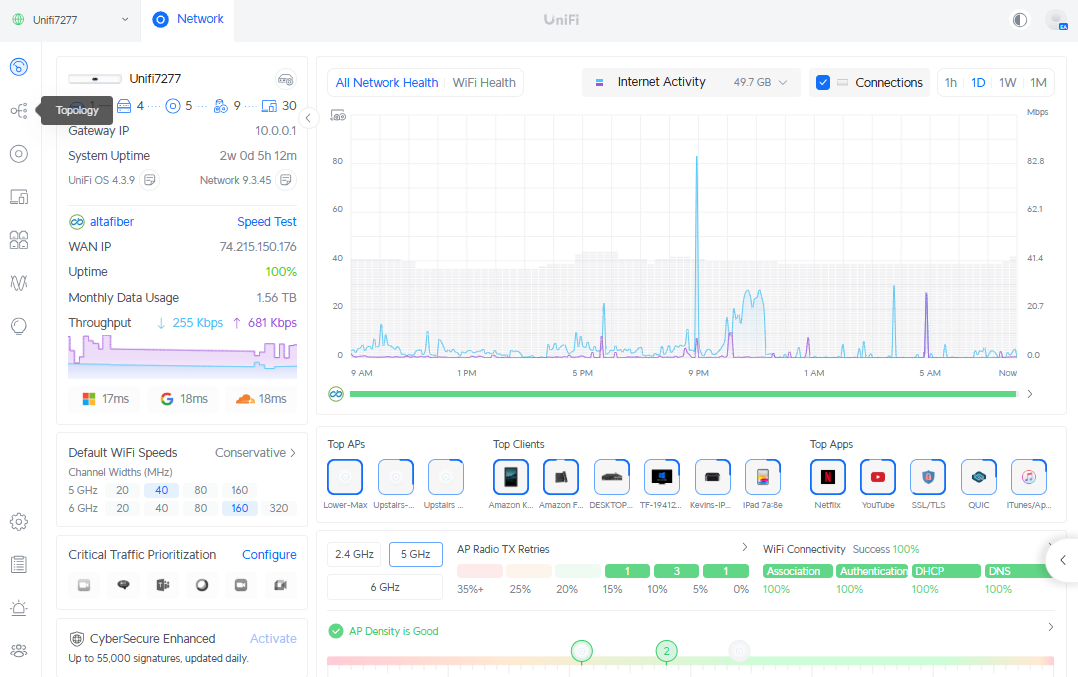
To validate Ubiquiti’s claim of supporting 50+ UniFi devices within a single deployment, we pushed our test environment to 19 active devices, a balanced mix of UniFi access points, switches, cameras, and NVR. This represents a medium-sized home network but still stresses the controller in a way that mimics small office or branch site usage.
The UniFi Device view clearly shows each device online, with a combination of 10 GbE, 2.5 GbE, and GbE uplinks/downlinks feeding into the Cloud Gateway Fiber. Devices span multiple roles, including WiFi coverage across several APs, network switching, and UniFi Protect cameras tied back to an NVR.
Even at this device count, the management interface remained responsive with no noticeable lag when navigating dashboards or drilling into performance views. This aligns with our experience on other UniFi gateways like the UDM Pro Max and UDR 7, where the UI scales predictably as more hardware is brought online.
While our test network did not reach the 50-device threshold, performance and stability at 19 devices suggest that the Cloud Gateway Fiber is well-equipped to manage larger UniFi environments without compromise.
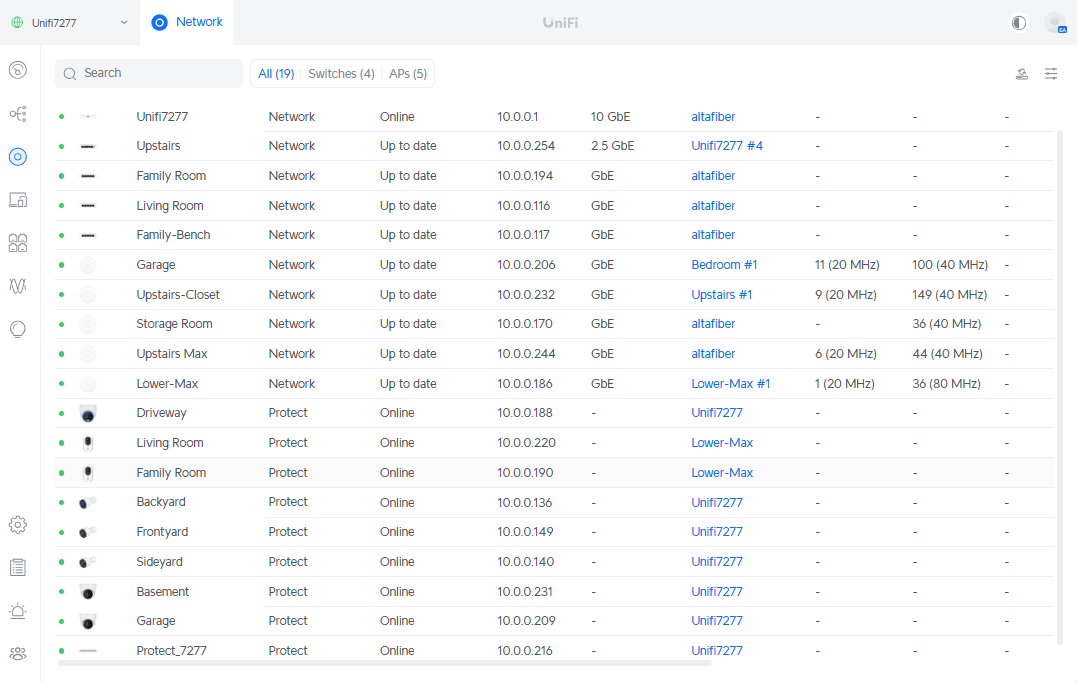
The AP management tab gives a clear view of airtime use, interference, and retries across all bands. In our test network, 2.4 GHz and 5 GHz remained stable with minimal interference. AP density was rated good, and connectivity success stayed at 100 percent for association, authentication, DHCP, and DNS. This view keeps wireless health easy to monitor and troubleshoot; this is consistent with what we have seen on other UniFi gateways.
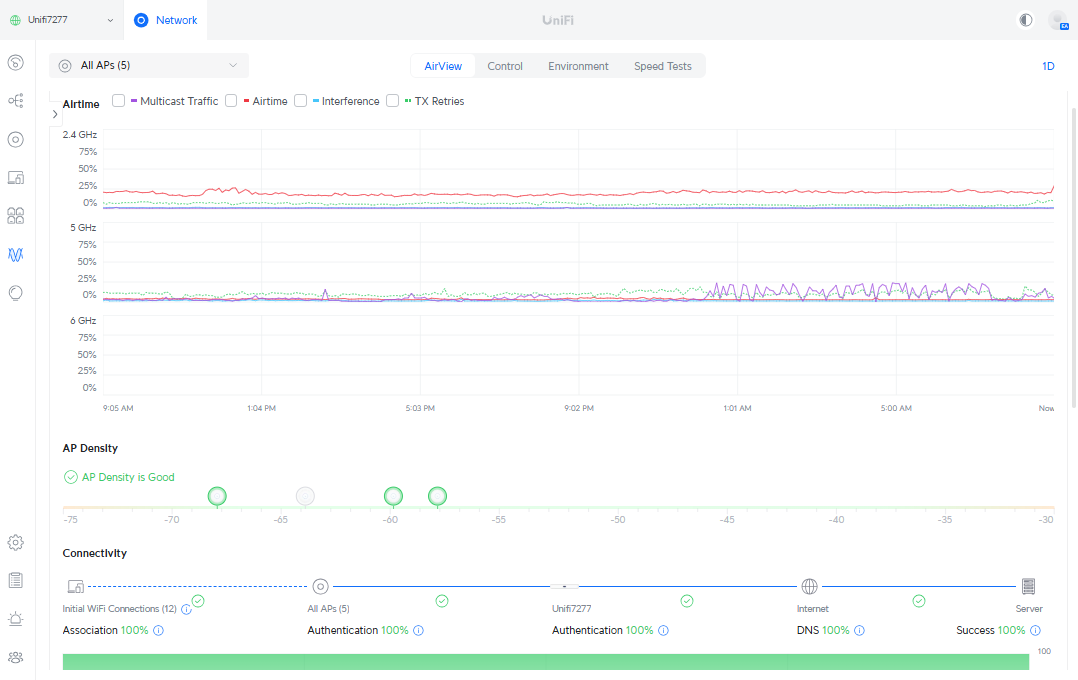
The UniFi Cloud Gateway Fiber brings the full UniFi networking stack into a compact form factor. Administrators have access to a complete suite of enterprise-grade tools, including firewall management, policy-based routing, QoS, port forwarding, static routes, and dynamic routing protocols like OSPF and BGP. DNS and NAT configurations are handled natively, with support for multiple VPN options such as WireGuard, IPsec, OpenVPN, L2TP, and Teleport.
CyberSecure integration extends protection with updated signatures, while redundant WAN support enables failover and load balancing across multiple uplinks. The gateway also supports Site Magic for simple edge-to-edge site connectivity without the complexity of manual VPN configuration. Together, these features make the Cloud Gateway Fiber a fully capable edge gateway designed to provide resilience and flexibility in small- to mid-sized deployments.
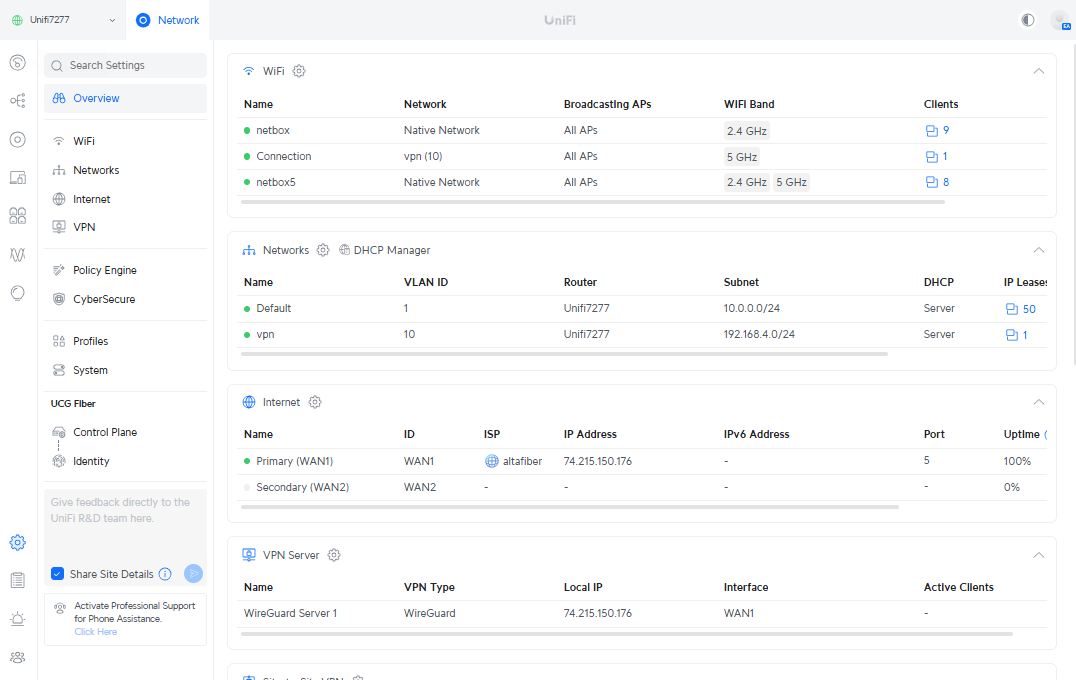
Conclusion
The Ubiquiti Cloud Gateway Fiber delivers impressive value as a compact 10G gateway, offering 5 Gbps of IDS/IPS-secured throughput at just $279. In testing, it handled a medium-sized deployment of 19 UniFi devices without issue, and the interface remained as smooth and familiar as what we have experienced on the UDM Pro Max and UDR 7. Features like advanced traffic controls, CyberSecure, and AirView give administrators the tools to keep both wired and wireless environments operating efficiently.
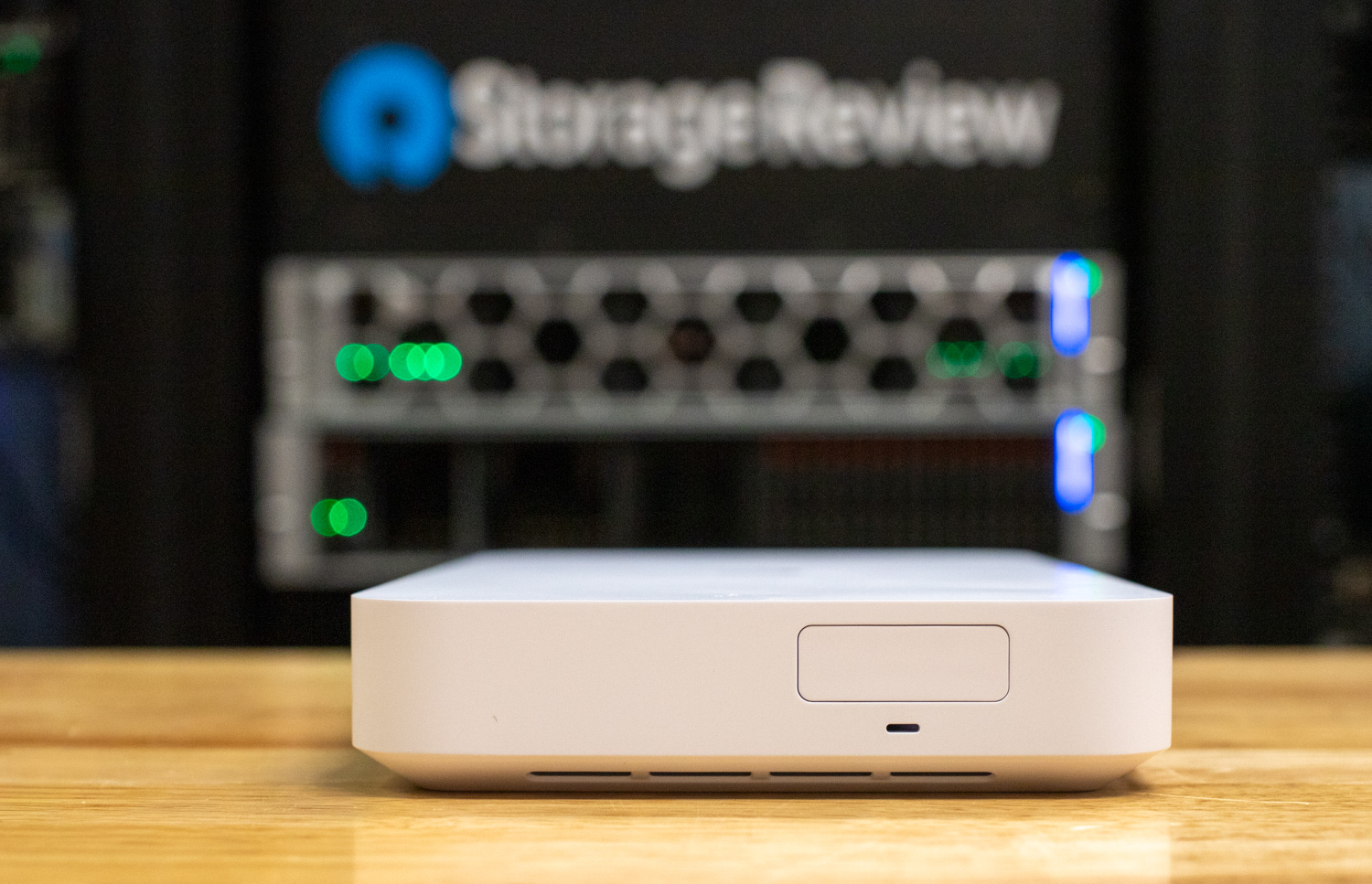
Although we did not enable the Protect portion of the gateway for this review, the option to add an NVMe drive for integrated NVR support is a meaningful selling point for small offices or home users. They only need a handful of cameras without a large, bulky device. Along with Protect, the Cloud Gateway Fiber supports the full UniFi application stack, including Network, Access, Talk, and Connect, giving it the flexibility to scale beyond simple routing into a unified management platform.
By combining routing performance, application support, and expandability, the Cloud Gateway Fiber positions itself as one of the most cost-effective ways to introduce 10G networking into a UniFi deployment.
Cloud Gateway Fiber Product Page (affiliate link)




 Amazon
Amazon